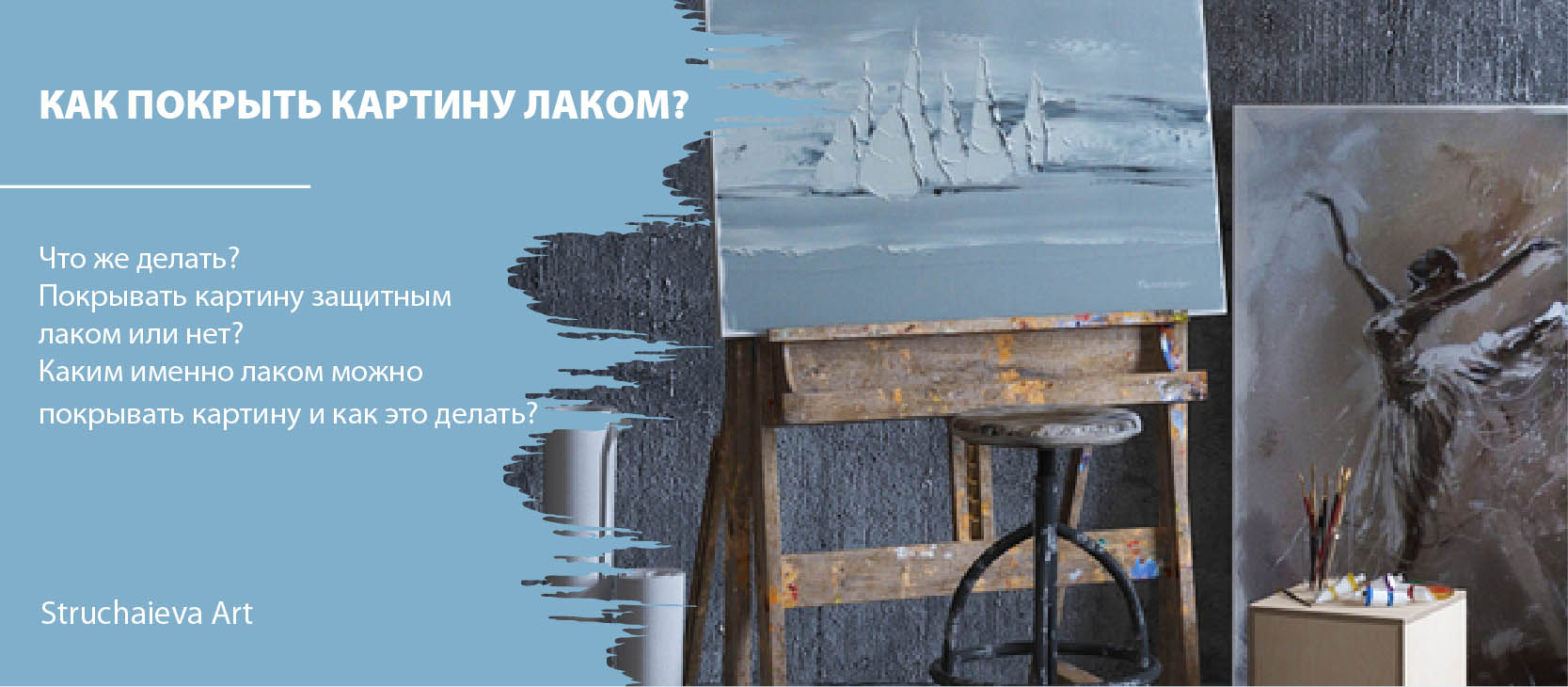
CONTENTS
Any painting, regardless of the used materials and technologies, can be varnished after complete drying. This will keep the paint on the canvas and give the artwork durability.
Is it necessary to cover the painting with a protective varnish or not? If so, what kind of varnish can be used to cover the painting and how to do it? We will try to answer these and some other questions that many artists have about the use of artistic varnish in this article.
First, you need to find out what an artistic varnish is and what is its purpose.
Artistic varnish is a solution of natural or synthetic resins and oils, which can be of different viscosities and is used for different purposes. According to their composition, varnishes are divided into resin and oil-resin. Also, based on the nature of the used resins and oils, all varnishes can be divided into natural (dammar, mastic, cedar, fir, balsamic-penta-oil, copal, retouch) and synthetic (acrylic-pistachio, fixative).
In addition to the classifications given above, artistic varnishes are divided by purpose. This division is perhaps the most important for artists.
Painting varnishes — are added to paints during the painting process.
Retouching varnishes — are used for reapplying the paint layer.
Covering (protective) varnishes — are applied on the finished dried painting to protect it from mechanical damage, sunlight and moisture.
In this article, we will consider precisely covering varnishes, their properties and features of use.
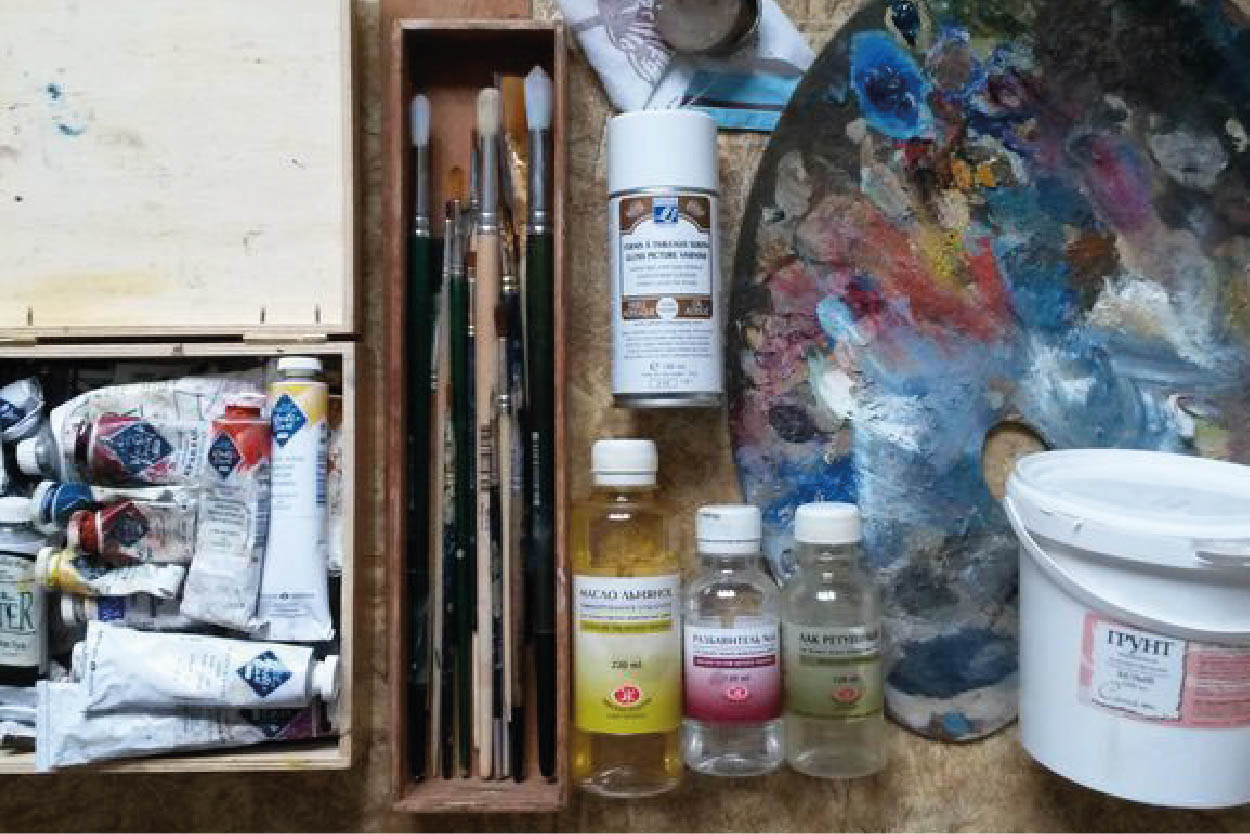
Covering varnishes include:
pistachio — almost colorless and quite elastic, but dries much longer than other varnishes;
acrylic-pistachio — has the same advantages as pistachio varnish, but dries much faster;
dammar — is especially popular due to its affordable price. However, over time, the varnish can become cloudy and yellowish to the artwork. In this regard, they are not recommended to cover paintings made in cold shades.
Why varnish a painting?
Covering the artwork with a protective varnish is not required to complete the painting. Each artist is free to decide for himself whether to cover the artwork or not. Below are the benefits you can get by using covering varnish to protect your artwork.
Benefits of using covering varnish for paintings:
- protection of the painting from external harmful factors (moisture, sun, mechanical damage);
- giving intensity to the colors of the painting;
- gloss leveling in multilayer painting;
- extending the lifetime of the artwork.
Thus, we see that the main task of the covering varnish is to protect the painting and, as a consequence, provide its durability. Thanks to the layer of varnish on top many world masterpieces have survived for several centuries without serious damage or changes.
When can you apply varnish on a painting?
In this matter, the paints an artwork is painted with play an essential role. For example, paintings made with gouache or acrylic can be varnished in a couple of days. Things are quite different with oil painting. Since the oil dries for a long time, oil paintings can be varnished no earlier than six months after the completion of the artwork.
Moreover, talking about paintings made with oil paints, it is worth paying special attention to the painting technique. After all, the time for complete drying of the artwork depends on the pictorial layer of paint. An important role is played by the microclimate in the room, where the painting dries. For the fastest and highest-quality drying without further cracking of the paint layer, the room should be ventilated, with an average air temperature of 18-25 degrees Celsius and natural light. Light plays an important role in the drying process of oil painting and is simply necessary for the painting to dry completely.
To make sure your artwork is ready to be varnished, arm yourself with a white rag and run it over the painting, lightly pressing it against the canvas. If you see even the smallest traces of paint, it is too early to varnish the artwork. Moreover, if the painting is written pasty, the strokes should be checked with light finger pressure. The fact is that the drying process of oil paints, or rather polymerization, is uneven. As a result, the oil dries faster on the outer layer and slower on the inside. If the smear is hard, the painting is ready for applying a protective varnish. If it is slightly springy, the paint inside has not yet completely dried up and it is too early to varnish the artwork.
How to apply covering varnish on a painting
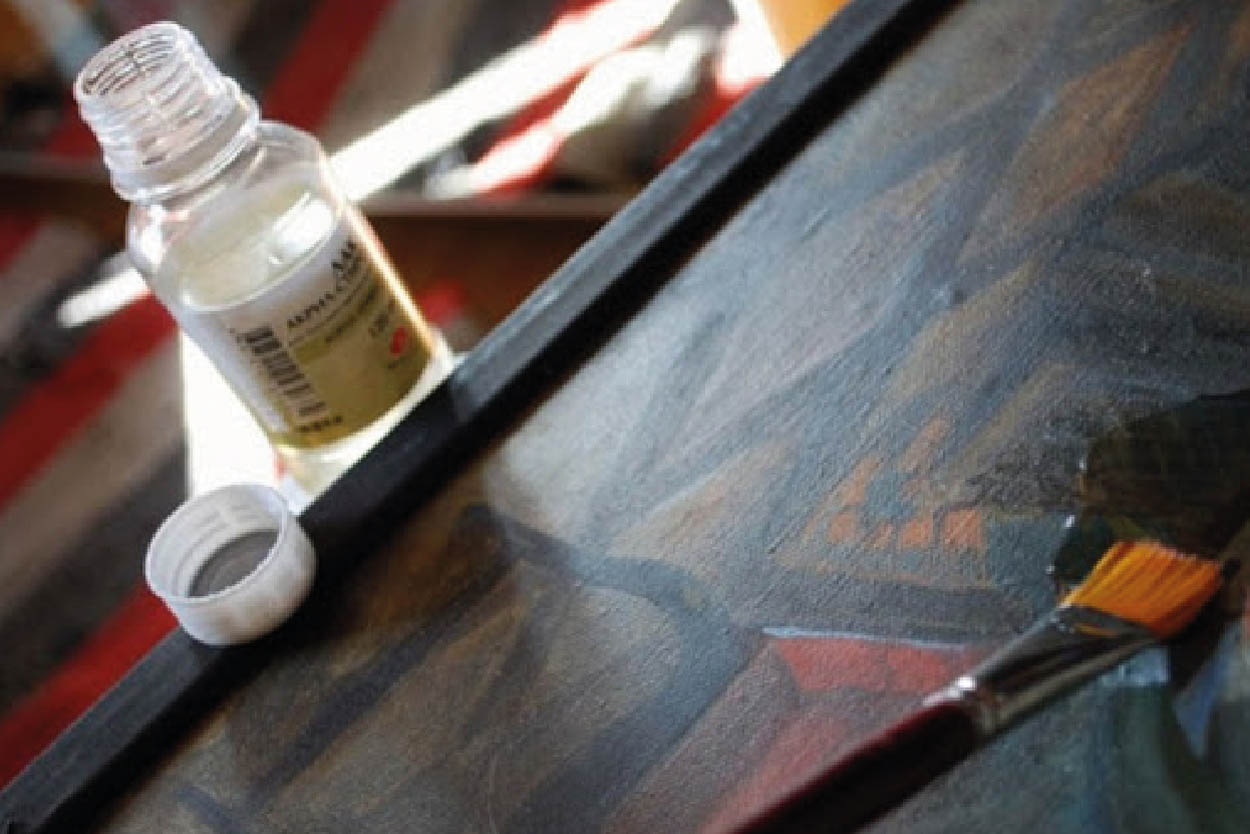
First, you need to make sure that the painting is really ready. We have already covered how to check that an artwork is dry. However, it is possible that your painting is already several years old or during the drying period it has become covered with dust, which must be removed before varnishing. To do this, you need to arm yourself with a clean rag that does not fade, slightly wet it, squeeze it well and pull it over your finger. Then you need to lightly rub it on a bar of laundry soap and gently run this soapy cloth over the whole painting.
It is important to move in one direction and not rub in different directions with a rag. Then, with a damp cloth, already without soap, you need to repeat through the artwork the same, in one direction, until the soap layer is washed off.
After completing this procedure, the painting must be given time to dry (1-3 days). And only after you make sure that the artwork is completely dry and clean, you can start varnishing. We remind you that this requires a topcoat or protective varnish, be careful not to use painting or retouching varnish. The use of the second will not create critical consequences, but it will not fully provide the desired protective effect.
So, we need:
- covering varnish;
- brush;
- a container, which it will be convenient to wet the brush into;
- a few rags or paper towels;
- disposable gloves (optional, but desirable for your comfort).
Armed with everything you need, set up your workplace. There should be enough space on a horizontal surface to place a painting and wield a brush without fear of touching any objects. The painting itself should be placed between you and the light source, which should well illuminate all areas of the artwork.
You need to apply varnish along and across the entire area of the painting. First you can apply a protective coating in stripes along the painting, and then across, or vice versa. In this case, the order does not matter. Do not apply a thick layer, the main thing is that it should be uniform. After all, a too thick layer of covering varnish can give strong reflections or even lead to cracking of the artwork.
It is also worth noting that varnishes for the protective coating of paintings can be glossy, semi-matte and matte. The choice depends on personal preference. Of course, if you paint a painting to order, it is better to discuss the issue of choosing a varnish with the customer.
After completing the application of a protective layer of varnish on the painting, it must be left in a horizontal position for several hours and only then can it can be placed vertically until completely drying. Otherwise, drips may appear from a layer of topcoat that has not yet set.
Washing brush after varnish
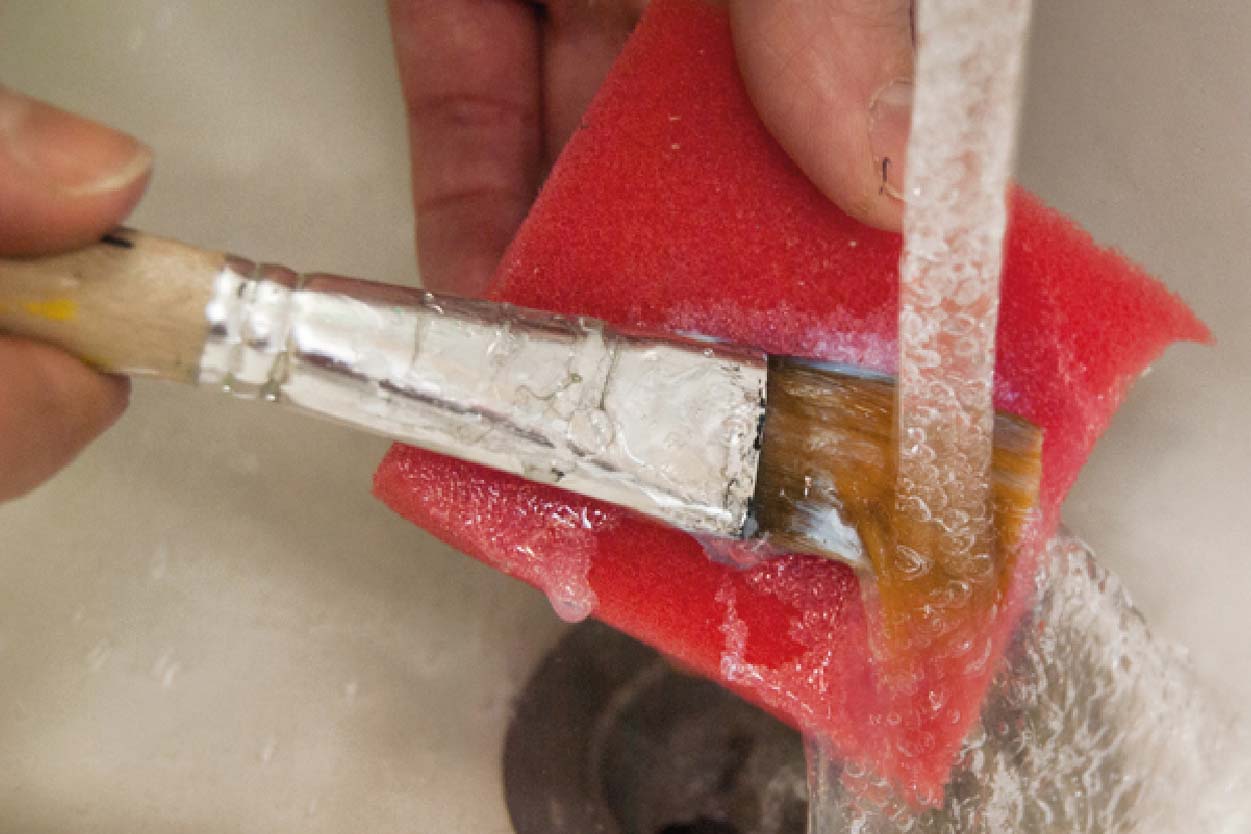
To clean the brush after using the covering varnish, first wipe it down with a rag and squeeze the remaining substance out of the bristle. Then, rinse your brush thoroughly in warm water with laundry soap. As soon as you feel that there are no traces of varnish on the bristles, shake the brush and wrap the fluffy part with paper or a napkin. In this form, leave it in a horizontal position until completely drying. Of course, you are not obliged to wrap the pile in paper or a rag, but then the bristles can spread out and no longer keep their initial shape.
If the article was useful to you, or you still have questions about the use of covering varnish, you can leave them in comments. And in the following materials, we will try to reveal the topics that interest you.
In the Struchaieva Art gallery you can buy paintings of different genres.
Also, below is a short video on how to varnish a picture painted with oil paints.
Video

The earliest work of Leonardo da Vinci
A small painted tile caused quite a stir among the scientists of the art world. This is because some scholars believe that the recently discovered work is Leonardo da Vinci's earliest known work
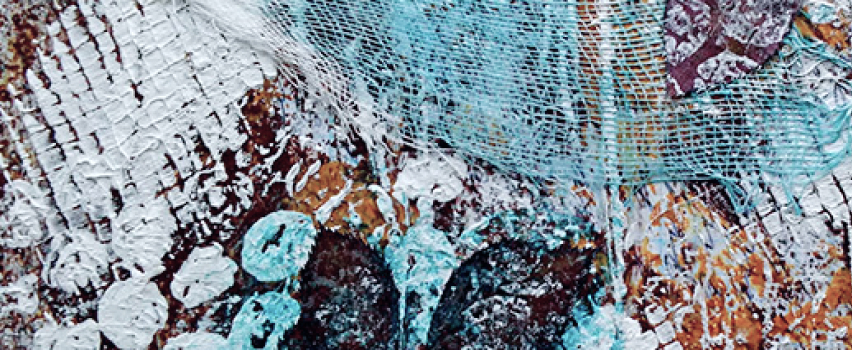
Interesting facts about painting
Paintings hold the secrets of the creator. Sometimes we manage to solve them, but many of them continue to be riddles, or simply stay unnoticed.












Thank you, your review has been sent successfully.
It will be posted on the site after moderation.